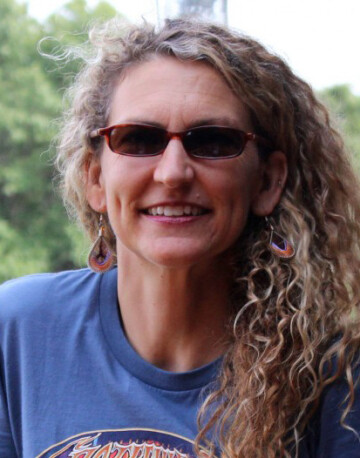The night before Mom’s funeral, I sit at my kitchen counter drinking beer and listening to audio recordings I made before she stopped speaking a year ago. Each time I recorded Mom and Dad I’d come home and listen, usually like this, late at night.
Mom died on Thursday, and now it’s Sunday. These past four weeks, I haven’t gone a day without seeing her. Tomorrow I’ll touch my mother for the last time. I can’t wrap my mind around that, so I sit at the counter and let her voice fill my kitchen. This is my wake.
Years ago Dad decided to offer a two-hour “visitation” before Mom’s funeral, so everything was in one day. “Not enough tears for two days,” he chuckled, using his humor to acknowledge how exhausting it is to mourn and greet the public at his age.
Traditionally a wake the night before a funeral was to view the body of a loved one and keep watch over it, usually at home. In some cultures, a wake allowed time to make sure the person was truly dead. Sometimes a bell was attached to the body with string so family would hear if the person stirred.
Mom once told me the most afraid she’d ever been as a child was when her parents were laid out in their coffins in the family living room. 1938. 1942. I never knew to ask if Mom lay in bed with her sisters, all night listening for a tinkling of the bell that meant these untimely deaths—cancer, car accident—had been a horrific mistake.
As a child I found “coffin photos” of these grandparents in our attic, keepsakes Mom could not part with, though she would never display them. She owned just one other photo of her parents, a wedding portrait. I remember my sidelong glances at these dead bodies. Though I didn’t know the word then, only one fits: macabre.
When I leave my house the morning of Mom’s funeral, I pass Slim’s Saddle Bar, where the barstools used to be topped with real saddles until some drunk fell off and sued. Even before 9 am there’s a group on the front porch smoking cigarettes. They are just off the 11 to 7 shift, I’d guess, and drinking before bed. No one knows I’m on the way to my mother’s funeral; it’s just another Monday to the rest of the world.
In the church vestibule I gather with Dad and my seven siblings, their spouses, children and grandchildren.
“I’ve got Mom’s purse with me today,” I say to my sister. I hold it up.
“I’m wearing her dress,” another sister says. A lovely navy blue print from 1950 or so, when Mom was a size five.
“I’m wearing her earrings,” another says. These are sweet tributes, part of our own ceremony, though none of us told the others we planned this.
“I’m not wearing her underwear,” a sister says. We all laugh.
My son and his cousins go out to the hearse to get their grandma. Last night we estimated the weight: if Mom is 80 pounds and the casket is 220, then six grandkids can sure lift fifty pounds each.
When they carry her in, a sister says, “Well there she is,” as if Mom’s been missing.
The pall bearers rest the casket on a cart and push Mom up to the altar. The Horan brothers open her casket for our family viewing. This is the moment I have dreaded: seeing her “laid out.” Her casket seems too small to hold a body. My hands feel enormous. Everything is slightly fuzzy around the edges. For a moment I think I might pass out.
I stand next to Dad. I hear a brother suck in his breath and walk away. We’ve got about thirty minutes with Mom until guests start to arrive. Let’s just get through this, is all I can think.
“She’s pretty,” I say to no one in particular.
Dad didn’t want anyone to photograph Mom her last two weeks of life, given her lack of dentures and empty stare. Today, she is beautiful. Anyone who knows her knows this isn’t how she looked, but she is lovely. The Horan brothers have filled in her cheeks—no longer the hollowed out features of someone who forgot how to swallow—and they’ve given her back her large bust.
“Who brought a camera?” Dad says.
“I did,” I tell him.
He says, “Now you can take her picture.”
Patti See is a frequent contributor to Wisconsin Life and Volume One. More from Patti here!























